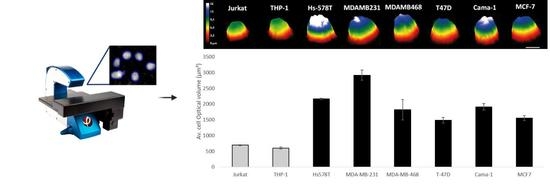Customer Publication

Discrimination between Breast Cancer Cells and White Blood Cells by Non-Invasive Measurements: Implications for a Novel In Vitro-Based Circulating Tumor Cell Model Using Digital Holographic Cytometry
Journal: Applied Sciences (2020)
Institution: Malmö University
Research Areas: Cancer research
Cell Lines: Jurkat, THP-1, Hs-578T, MDA-MD-231, MDA-MB-468, T57D, Cama-1, MCF-7 (Jurkat – human T-cell acute lymphoblastic leukemia; THP-1 – human monocytic cell line; Hs-578T – human mammary gland carcinoma MDA-MB-231 – Human mammary carcinoma cell line; MDA-MB-468 – Human mammary carcinoma cell line; T57D – Human mammary carcinoma cell line; Cama-1 – Human breast cancer cell line; MCF-7 breast cancer cell line)
Summary: Circulating Tumor Cells (CTC) are the main cause of cancer metastasis and regeneration. However, at the moment there is a lack of methods capable to detect and isolate CTC, as they are rare and heterogeneous. In this work, Z. El-Scich with colleagues have studied the morphological differences between white blood cell lines and human breast cancer cell lines. Authors have utilized HoloMonitor M4 and results show that there are significant differences in cell size-related parameters (cell area, cell volume, and cell thickness) between white blood cell lines and breast cancer cell lines, implying that HoloMonitor M4 and digital holographic cytometry can become a powerful diagnostic tool to characterize and detect CTCs in the blood.